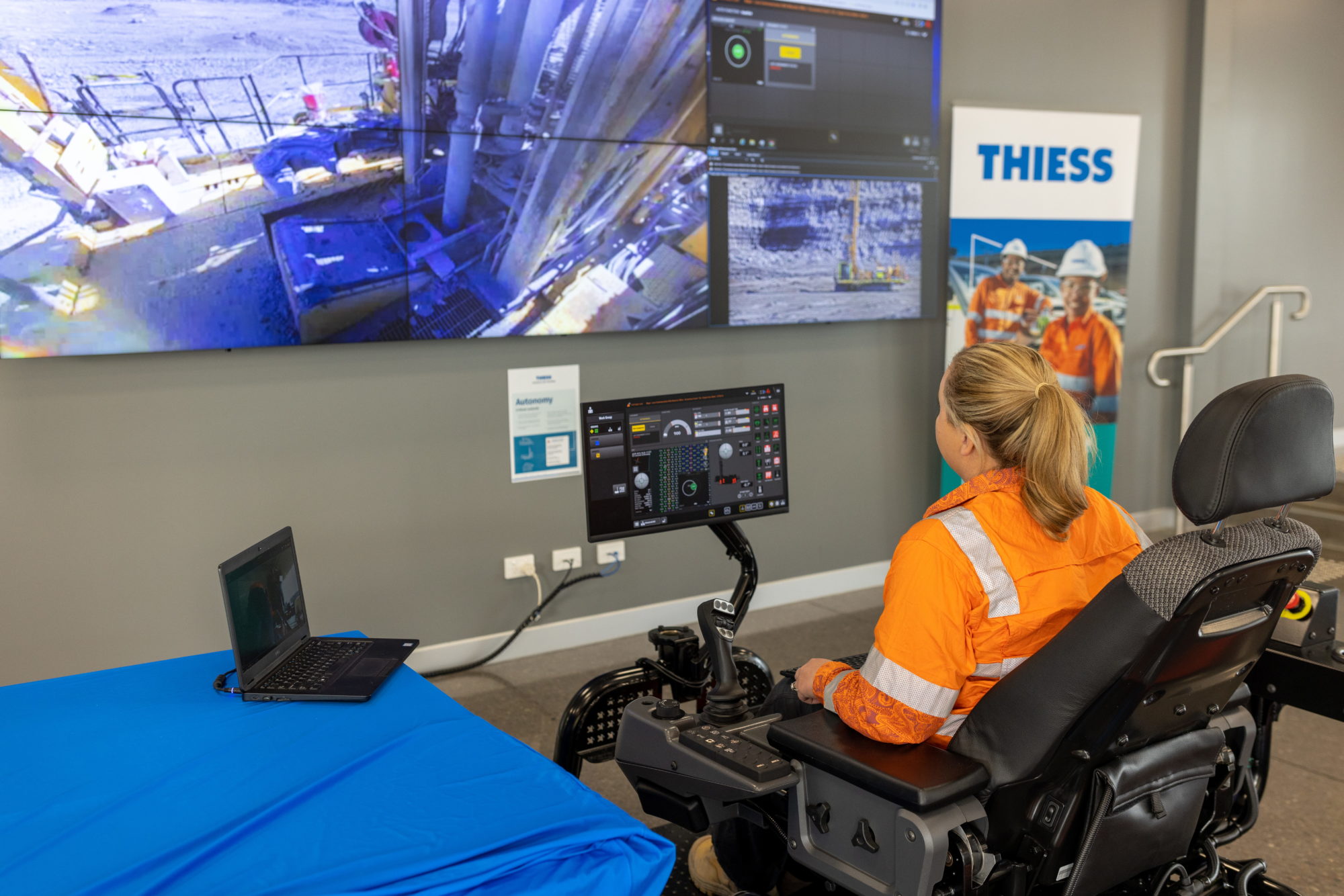In what WesTrac says is a world-first for autonomous drilling, mining services provider Thiess has successfully rolled out a system that involves three Cat® drill rigs being remotely operated by a single operator.
The solution is part of an ongoing program, also involving original equipment manufacturer Caterpillar® and specialist Cat equipment and service provider WesTrac, to ultimately achieve full autonomy. The current solution involves a single operator, working from a remote on-site operating centre, issuing commands to the three drill rigs simultaneously to instruct them to commence single-row autonomous drilling.
Apart from the operator instructing the rigs to move to the next row and commence drilling according to the pre-defined pattern, all operations are carried out using Cat autonomous technology. Ultimately, the program will see drill rigs completing entire drill patterns across multiple rows in fully autonomous mode.
Since the program went live earlier this year at a project in New South Wales, Australia, Thiess has reported a 20% improvement in drilling performance, including increased rig utilisation with operating times above 20 hours per drill per day, according to WesTrac. Accuracy has also improved with no re-drilling required since the solution was rolled out.
According to WesTrac Project Manager, Joanne Henry, the project involved an iterative rollout and collaborative approach between Thiess, WesTrac and Caterpillar that included phased development and implementation of various new technologies.
“As the OEM, Caterpillar, developed the drills and the technology layer to a certain point, but, as a development partner, Thiess drove a lot of the requirements for ongoing improvements and there’s been constant collaboration throughout the project,” Henry said.
The phased approach allowed Thiess to progressively upskill workers, verify the technology in stages and move smoothly towards the desired final outcome, WesTrac says.
Starting with a single drill rig and staged implementation of technology, Thiess progressed from manual operation to Operator Mission Assist (OMA) functionality that still involved an operator being stationed in the cab but introduced a range of automated functions. This allowed operators to build their understanding of new functions before the next stage – removing them from the cab and locating them in the remote operating station – was implemented.
Following successful evaluation of the single rig operating in autonomous mode, a second rig – albeit a different size to the first – was fitted with the same autonomous operating technology and Thiess operators were able to simultaneously control both rigs. A third rig was fitted out with the technology earlier this year, enabling Thiess to have three rigs working in unison. This has seen one multi-pass MD6250 rig and two single-pass MD6310s operated simulataneously from a single remote operator station.
According to Thiess, there were multiple benefits in relocating operators from the cab to the remote station. The obvious one was reduced risk by taking those operators “out of the line of fire”, however improved fatigue management also occurred as operators were freer to take short breaks and move around without impacting drill operations.
“Thiess also realised a higher level of engagement because team members had the opportunity to upskill,” Henry said.
“That has the potential not only to drive retention of existing staff, but to attract younger generations who see the appeal of working with world-leading technology.”
Another beneficial outcome derived from the collaborative approach was the development of new strata visualisation software that allows operators to see a 3D view of each hole profile they have drilled.
“That’s another piece of technology that in itself could revolutionise the way drilling operations are carried out,” Henry said.
“But, more importantly, it is a powerful addition to the overall solution that’s enabling Thiess to realise significant people, technology and process benefits.”
Thiess Head of Asset Management & Autonomy, Matt Petty, said: “We’ve been on our autonomous drilling journey since 2019, when we mobilised our first Caterpillar MD-series drill, equipped with OMA technology, moving through to ‘single-row’, with the goal of full pattern, multi-pass autonomous drilling using multiple drills at a time with one controller.
“Our close collaboration and a controlled, phased rollout of the technology with operational insight has meant piloting, implementation and refinement of the technology has been safe, efficient and successful.
“We’re now looking to expand our application of autonomous drill technology, ultimately graduating to off-site remote operating centres, from which controllers can operate multiple drills across multiple projects.”











